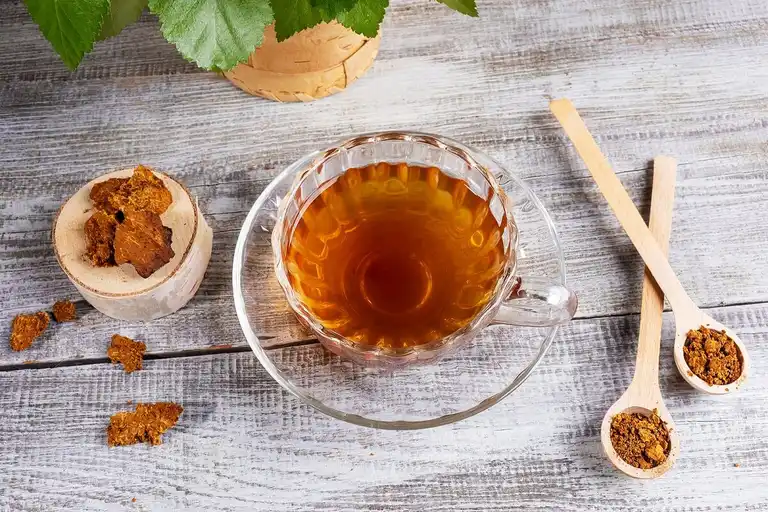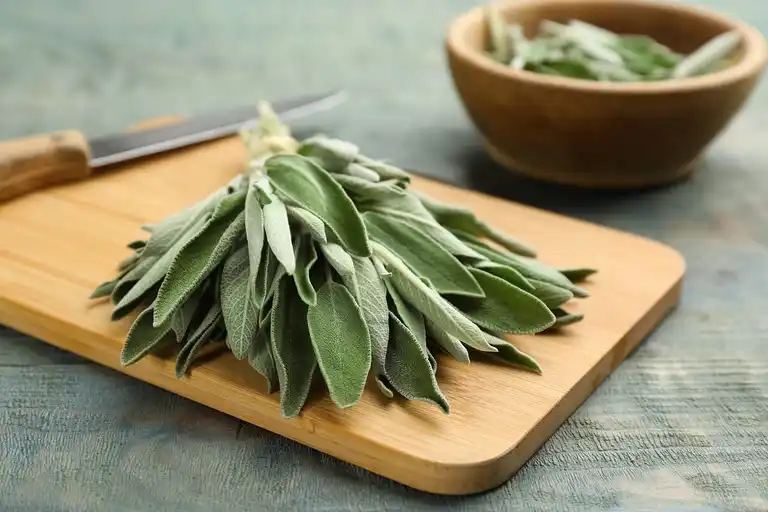9 Diuretic Infusions to Eliminate Fluids from the Body


Reviewed and approved by the doctor Gilberto Adaulfo Sánchez Abreu
Diuretic infusions are drinks with properties that help eliminate fluids retained in the body. In particular, they stimulate urine production and help reduce swelling in areas such as the ankles, legs, feet, and hands.
As an article shared in the National Center for Biotechnology Information explains, diuresis is necessary when the body abnormally accumulates fluid, both in the case of edematous and non-edematous conditions.
Given the complexity of this problem, a doctor’s assessment is first necessary. Sometimes chronic diseases such as kidney or heart failure are responsible for this symptom. However, mild cases such as those caused by hormonal fluctuations, a sedentary lifestyle, or stress can be addressed naturally.
Recommendations for the safe consumption of diuretic infusions
Before taking a detailed look at the infusions with diuretic properties, it’s important to make some preliminary considerations for their safe consumption. In general, these drinks don’t cause any problems in most healthy adults. However, they should be eaten in a timely and moderate manner.
There are those who believe that because they’re “natural” they’re the best treatment option and do not cause side effects. Far from reality, they are not a first-choice option to treat diseases and they can lead to adverse reactions, especially in special conditions. Thus, their consumption should be avoided in the following cases:
- Pregnancy and lactation
- Small children
- Renal insufficiency
- Heart failure
- Liver diseases
- Treatments with drugs or other diuretic supplements
- Treatments with drugs for hypertension, varicose veins, or circulation
Diuretic infusions to remove fluids from the body
The feeling of swelling and heaviness are the most common symptoms of fluid retention. Similarly, shiny, tense, or tight skin can be observed. For their part, the joints reduce their mobility and may feel inflamed. If so, it’s necessary to consult a doctor to establish the cause.
There are some edematous diseases that require professional intervention due to their severity. Meanwhile, if there is an accumulation of water due to minor causes (hormonal activity, stress, sedentary lifestyle, overweight, etc.), the consumption of diuretic infusions can help.
As detailed in an article shared in the journal Offarm: Pharmacy and Society, plants with diuretic action usually have a mild excretory effect due to their content of essential oils, flavonoids, saponins, and potassium salts. Which are the most recommended? We’ll take a look at them in detail here.
1. Birch infusion
In traditional medicine, birch infusion has been an adjuvant to combat inflammation and stimulate the elimination of liquids. An investigation in the Journal of Ethnopharmacology details that it contains flavonoids, saponins, and essential oils.
These active compounds are positively associated with the treatment of edema. In fact, the plant is often used to increase diuresis in case of lower urinary tract infections or rheumatic complaints.

Ingredients
- 1 c. of water
- 1 tsp. of dried birch leaves
Preparation
- Add the birch leaves to a cup of boiling water and leave it to stand for 10 minutes.
- After this time, filter it with a strainer.
Method of consumption
- If your doctor authorizes it, drink one cup mid-morning and another mid-afternoon.
- Avoid adding sugar or sweeteners, as these promote fluid retention.
Note: This remedy is counter-indicated for pregnant women and people with hypertension or cardiac disease. It’s not advisable to exceed the suggested dose, as it can lead to intoxication and symptoms such as vomiting, nausea, and respiratory difficulties.
2. Hybiscus infusion
Although known as an ornamental plant due to its showy flowers, the hibiscus also has a long history as natural medicine. In particular, it has been valued for its ability to stimulate fluid excretion.
An investigation shared through Planta Medica details that these effects can be derived from its content of flavonoids and organic acids. However, more evidence is required.
Ingredients
- 1 cup of water (250 ml)
- 1 teaspoon of dried hibiscus calyxes (3 g)
Preparation
- First, bring the cup of water to a boil.
- Now, add the hibiscus calyxes and let it steep for 10 minutes.
- After this time, strain the infusion.
How to consume it
- Drink 2 cups a day, for a maximum of 15 days.
Note: avoid consumption during pregnancy and lactation. It should not be taken before surgery or if you are taking medication to lower your blood pressure. In excess, it can cause stomach upset, gas and constipation.
3. Green tea
Due to its caffeine content, green tea is associated with increased diuresis in the body. In addition, as detailed in an investigation in International Scholarly Research Notices, this plant increases the glomerular filtration rate by increasing renal blood flow and cardiac output, which also contributes to its diuretic action.
Ingredients
- 1 c. of water (250 ml)
- 1 tsp. of green tea (3 g)
Preparation
- Add a teaspoon of green tea to a cup of boiling water.
- Cover and leave it to stand for 10 minutes
- Once it has brewed, filter it with a strainer
Method of consumption
- Drink 2 or 3 cups of green tea per day.
Note: Green tea is counter-indicated during pregnancy and breastfeeding and for patients with an iron deficiency, hypotension, or nervous conditions. Also avoid it before going to sleep.
4. Artichoke infusion
The nutritional composition of the artichoke makes it stand out among many foods. As detailed in a study shared in the Journal of the Science of Food and Agriculture, it’s an ingredient that provides an interesting dose of potassium and other minerals that not only promote diuresis, but also the prevention of cardiovascular diseases.
Other phytonutrients such as apigenin, cynarin, silymarin, and luteolin are also linked to its diuretic effect. In any case, it should be clarified that more studies are required to evaluate this property.
Ingredients
- 1/2 an artichoke
- 1 c. of water (250 ml)
Preparation
- Separate the leaves of half an artichoke, boil the water in a pan and add the leaves.
- Turn down the heat and leave the infusion for 2 to 3 minutes.
- Turn it off, leave it to stand, and then strain it.
Method of consumption
- Drink the infusion first thing in the morning on an empty stomach and, if you like, repeat mid-afternoon
- Avoid drinking at night.
Note: Not recommended for people with gallbladder stones due to its oxalate content.
Visit this article: Artichokes: The Best Natural Remedy
5. Dandelion infusion
In natural medicine, the dandelion stands out as one of the most powerful diuretics.For hundreds of years, the plant has been used in the preparation of diuretic infusions. Its intake increases urine production and helps reduce inflammation.
In fact, a study revealed in the Journal of Alternative and Complementary Medicine found that dandelion ethanolic extract has promising diuretic effects in humans.
Ingredients
- 1 c. of water (250 ml)
- 1 tsp. of dandelion (10 g)
Preparation
- Firstly, add the dandelion to a cup of boiling water and cover it.
- Leave it to stand for 5 to 10 minutes then strain it.
Method of consumption
- Drink a cup of the infusion mid-morning.
- Don’t drink more than 3-4 cups a day.
Note: This should not be consumed during pregnancy or if you have gallbladder or stomach problems.
6. Parsley infusion
In folk medicine, parsley has been one of the most popular plants for treating fluid retention. Such effects were seen in an animal study shared in the Journal of Ethnopharmacology.
According to said publication, the ingestion of the aqueous extract of the plant was useful to increase the flow of urine. Even so, more evidence is required to assess whether these same effects occur in humans.
Ingredients
- 1 tablespoon of fresh parsley leaves (6 g)
- 1 cup of water (250 ml)
- Lemon drops (optional)
Preparation
- Pour the fresh parsley leaves into a cup of boiling water.
- Cover the drink and let it sit for 10-15 minutes.
- Then, pass it through a strainer and add a few drops of lemon.
How to consume it
- Drink 2 to 3 cups of infusion a day.
Note: Avoid this infusion if you have been diagnosed kidney disease or if you are pregnant.
7. Horsetail tea
Horsetail is one of the best-known diuretic ingredients. Although evidence on these properties is lacking, a study shared through Evidence-Based Complementary and Alternative Medicine compares its diuretic activity with that of hydrochlorothiazide, which is a laboratory diuretic.
Ingredients
- 1 tablespoon of horsetail (5 g)
- 1 cup of water (250 ml)
Preparation
- Pour the horsetail into a cup of boiling water.
Cover the drink and let it sit for 10 minutes.
To finish, pass it through a strainer.
How to consume it
- Drink 2 or 3 cups of infusion a day, for a maximum of 2 weeks.
Note: Long-term use is not recommended. Evidence shows that the plant should not be ingested by people who have been diagnosed with kidney disease, diabetes, or other chronic conditions.
8. Fennel seed infusion
With fennel seeds, you can also obtain one of the best diuretic infusions. A review in the Arabian Journal of Chemistry details that its extracts have potential as a diuretic and as a supplement to lower blood pressure.
In addition, it’s abundant in nutrients such as protein, fiber, minerals, vitamins, organic acids, and antioxidant compounds.
Ingredients
- 1 teaspoon of fennel seeds (3 grams)
1 cup of water (250 ml)
Preparation
- Add the fennel seeds to a cup of boiling water.
- Let stand for 10 minutes, strain and consume.
How to consume it
- Drink 2 or 3 cups of infusion a day.
Note: Avoid if sensitive to estrogen effects. Also in pregnancy, lactation, and in young children.
9. Sage tea
In folk medicine, sage has been used as a diuretic agent. Animal studies suggest that it may help increase fluid excretion. Despite this, more research is required to corroborate it.
Ingredients
- 1 tablespoon of sage leaves (5 g)
1 cup of water (250ml)
Preparation
- Pour the sage into a cup of boiling water.
- Remove the drink from the heat, cover it and let it rest for about 10 minutes.
- Next, pass it through a strainer and consume it.
How to consume it
- Drink 2 cups of infusion a day.
Note: avoid consumption in case of hormonal disorders, kidney problems, allergies, epilepsy, and pregnancy.

Other ways to eliminate retained fluids from the body
Moderate intake of these diuretic infusions can reduce fluid retention. In any case, there are other natural strategies that promote optimal fluid elimination. This encompasses the following:
- Do regular physical exercise, at least 20 minutes a day.
- Consume plenty of water and healthy fluids to keep your body hydrated.
- Eat foods rich in potassium, as they help excrete fluids and sodium.
- Limit your salt intake.
- Consume magnesium supplements, a mineral that is also key to maintaining fluid balance.
However, the experts from the Spanish Heart Foundation indicate that, in addition to improving eating habits and exercise, other measures that help reduce edema are: “keep your legs elevated and avoid sitting for very long periods of time.”
What should you remember about diuretic infusions?
The preparation of diuretic infusions can help reduce mild fluid retention, associated with hormonal fluctuations, stress, or diet. However, to date, the evidence on its properties remains limited. Therefore, they should be used sparingly and carefully.
Since edema can be an indication of a more serious disease, it’s best to see a doctor if the symptom is severe or persistent. After establishing the diagnosis, the professional can guide towards other types of treatments.
All cited sources were thoroughly reviewed by our team to ensure their quality, reliability, currency, and validity. The bibliography of this article was considered reliable and of academic or scientific accuracy.
- Ajmera, P., Kalani, S., & Sharma, L. (2019). Parsley-benefits & side effects on health. International Journal of Physiology, Nutrition and Physical Education, 4(1), 1236-1242. https://www.journalofsports.com/archives/2019/vol4/issue1/4-1-308
- Atto, V., Oussou, N. J. B., Diby, Y. B., Konan, B. A., & Datte, J. Y. (2023). Diuretic activity assessment of an aqueous extract of Hibiscus sabdariffa (Malvaceae) leaves on Wistar rats. Journal of Drug Delivery & Therapeutics, 13(11), 56-61. https://jddtonline.info/index.php/jddt/article/view/5999
- Bekheet, S., & Sota, V. (2019). Biodiversity and medicinal uses of globe artichoke (Cynara scolymus L.) plant. Journal of Biodiversity Conservation and Bioresource Management, 5(1), 39-54. https://www.banglajol.info/index.php/jbcbm/article/view/42184
- Carneiro, D. M., Freire, R. C., Honório, T. C., Zoghaib, I., Cardoso, F. F., Tresvenzol, L. M., de Paula, J. R., Sousa, A. L., Jardim, P. C., & da Cunha, L. C. (2014). Randomized, Double-Blind Clinical Trial to Assess the Acute Diuretic Effect of Equisetum arvense (Field Horsetail) in Healthy Volunteers. Evidence-Based Complementary and Alternative Medicine, 2014, 1-8. https://onlinelibrary.wiley.com/doi/10.1155/2014/760683
- Chakraborty, M., Kamath, J. V., & Bhattacharjee, A. Potential Interaction of Green Tea Extract with Hydrochlorothiazide on Diuretic Activity in Rats (2014). International Scholarly Research Notices, 2014(4), 1-5. https://www.ncbi.nlm.nih.gov/pmc/articles/PMC4897558/
- Di Napoli, A., & Zucchetti, P. (2021). A comprehensive review of the benefits of Taraxacum officinale on human health. Bulletin of the National Research Centre, 45(110), 1-5. https://link.springer.com/article/10.1186/s42269-021-00567-1
- Divya, D. (2022). Effect of Fennel seed: On women health. International Journal of Advances in Nursing Management, 10(2), 95-98. https://www.indianjournals.com/ijor.aspx?target=ijor:ijanm&volume=10&issue=2&article=002
- Halder, S., & Sharma, A. (2017). A review on Urtica dioica L.World Journal of Pharmacy and Pharmaceutical Sciences, 6, 404-421. https://www.wjpps.com/Wjpps_controller/abstract_id/7880
- Hedaoo, S. A., & Bodhankar, M. M. (2018). Advantages of natural diuretics over synthetic diuretics as a part of treatment. World Journal of Pharmacy and Pharmaceutical Sciences, 8(8), 310-327. https://www.wjpps.com/Wjpps_controller/abstract_id/10214
- Kubica, P., Szopa, A., Dominiak, J., Luczkiewicz, M., & Ekiert, H. (2020). Verbena officinalis (Common Vervain) – A Review on the Investigations of This Medicinally Important Plant Species. Planta Medica, 86(17), 1241-1257. https://www.thieme-connect.de/products/ejournals/html/10.1055/a-1232-5758
- Miraj, S., & Kiani, S. (2016). A review study of therapeutic effects of Salvia officinalis L. Der Pharmacia Lettre, 8(6), 299-303. https://core.ac.uk/reader/143840610
- Montagna, C. (s.f.). Soluciona la retención de líquidos. Blog Impulso Vital. Fundación Española del Corazón. https://fundaciondelcorazon.com/blog-impulso-vital/2649-soluciona-la-retencion-de-liquidos.html
- Patil, K., Sanjay, C. J., DoggALLI, N., Devi, K. R., & Harshitha, N. (2022). A Review of Calendula Officinalis Magic in Science. Journal of Clinical and Diagnostic Research, 16(2), ZE23-ZE27. https://www.jcdr.net/article_abstract.asp?id=16024
- Rastogi, S., Pandey, M. M., & Kumar Singh Rawat, A. (2015). Medicinal plants of the genus Betula–traditional uses and a phytochemical-pharmacological review. Journal of Ethnopharmacology, 159, 62-83. https://www.ncbi.nlm.nih.gov/pmc/articles/PMC7126499/
- Rather, M. A., Dar, B. A., Sofi, S. N., Bhat, B. A., & Qurishi, M. A. (2016). Foeniculum vulgare: A comprehensive review of its traditional use, phytochemistry, pharmacology, and safety. Arabian Journal of Chemistry, 9, S1574-S1583. https://www.sciencedirect.com/science/article/pii/S1878535212000792
- Sarfaraz, S., Sarwar, G., Fatima, W., Ramzan, S., Amjad, R., Tareen, R., & Irfan, S. (2015). Evaluation of diuretic potential of lemon juice and reconstituted lemon drink. World Journal of Pharmaceutical Research, 4(7), 254-259. https://www.semanticscholar.org/paper/EVALUATION-OF-DIURETIC-POTENTIAL-OF-LEMON-JUICE-AND-Sarfaraz-Sarwar/9447954bc566802222b32f7309321bfb8cc7b91f
- Tesfaye, A., & Mengesha, W. (2015). Traditional uses, phytochemistry and pharmacological properties of garlic (Allium Sativum) and its biological active compounds. International Journal of Scientific Research in Science, Engineering and Technology, 1, 142-148. https://www.researchgate.net/publication/298327340_Traditional_Uses_Phytochemistry_and_Pharmacological_Properties_of_Garlic_Allium_Sativum_and_its_Biological_Active_Compounds
- Thompson, A. D., & Shea, M. J. (Octubre de 2023). Hinchazón (edema). Manual MSD. https://www.msdmanuals.com/es-ar/hogar/trastornos-del-coraz%C3%B3n-y-los-vasos-sangu%C3%ADneos/s%C3%ADntomas-de-los-trastornos-cardiovasculares/hinchaz%C3%B3n
- Thuraisingam, S., Sunilson, J. A. J., Kumari, A. V. A. G., & Anandarajagopal, K. (2019). Preliminary phytochemical analysis and diuretic activity of the extracts of Coriandrum sativum leaves in Wistar albino rats. International Research Journal of Pharmacy and Medical Sciences, 3, 1-3. https://www.researchgate.net/publication/344283216_Preliminary_Phytochemical_Analysis_and_Diuretic_Activity_of_the_Extracts_of_Coriandrum_Sativum_Leaves_in_Wistar_Albino_Rats
This text is provided for informational purposes only and does not replace consultation with a professional. If in doubt, consult your specialist.








